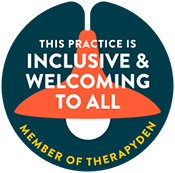How many EMDR therapy sessions will you need? Most people complete treatment in 6 to 12 sessions, but this can vary.
In this article, we explain what influences the number of sessions in EMDR therapy, how many sessions you might expect, and what to anticipate from the process.
Key Takeaways
- EMDR therapy typically requires between 6 to 12 sessions, varying based on individual trauma complexities and client engagement.
- The therapy follows a structured eight-phase process that facilitates the efficient processing of traumatic memories and the development of coping strategies.
- EMDR offers a distinct approach compared to traditional therapies by reducing emotional distress without extensive verbal recounting of traumas.
Understanding EMDR Therapy
EMDR therapy, or Eye Movement Desensitization and Reprocessing, is a structured, evidence-based treatment designed to help individuals process and overcome distressing memories and experiences. Developed by Dr. Francine Shapiro in 1987, this revolutionary approach has been clinically tested since 1989, with numerous studies validating its effectiveness. Unlike traditional talk therapies, EMDR focuses on altering the emotions, thoughts, and behaviors stemming from traumatic experiences, thus reducing their vividness and emotional impact.
The goal of EMDR therapy is to process painful memories causing problems, ultimately enabling clients to manage their distress without reliving the trauma. This method involves a collaborative effort between the therapist and the client, often showing results within just a few sessions.
EMDR therapy utilizes the brain’s natural healing processes, aiding clients in finding relief from their symptoms and fostering a sense of stability and empowerment.
This therapeutic approach is particularly effective in treating PTSD, anxiety, depression, and even addiction, making it a versatile tool in mental health care. The therapy’s primary focus is on altering the emotions, thoughts, or behaviors linked to distressing experiences, providing profound relief for those suffering from traumatic stress disorders.
At its core, EMDR therapy aims to reduce the vividness and emotional intensity of trauma memories through a process known as bilateral stimulation. This technique involves eye movements or other forms of rhythmic left-right stimulation, which helps in processing unprocessed memories that cause distress.
The EMDR Process
The EMDR process is meticulously structured into eight phases, each designed to help clients efficiently process and resolve traumatic memories.
These phases guide the therapist and client through a systematic approach, ensuring that every aspect of the traumatic experience is addressed.
The process begins with:
- History taking and treatment planning
- Preparation
- Assessment
- Desensitization
- Installation
- Body scan
- Closure
- Reevaluation
This structured approach ensures that clients not only process their traumatic memories but also develop the necessary coping strategies to manage any distress that may arise during and after the therapy sessions. Completing the eight phases typically significantly reduces the emotional intensity of traumatic memories, fostering a more adaptive and resilient response to future stressors.

How Many EMDR Sessions Are Needed?
One of the most common questions about EMDR therapy is the number of sessions required to achieve effective results. On average, EMDR therapy spans between 6 to 12 sessions, though this can vary significantly based on individual circumstances and the complexity of the trauma being addressed.
While some clients may begin to feel relief from their symptoms in just a few sessions, others with more severe or complex trauma histories might require additional sessions to fully process their experiences and achieve lasting benefits.
Typical Session Count
Typically, the number of EMDR therapy sessions needed ranges from 6 to 12, depending on various factors such as the severity of symptoms and individual circumstances. Many clients report feeling significant relief from their symptoms after just a few sessions, making EMDR a relatively short-term therapy compared to traditional psychotherapies.
However, the exact number of sessions required can vary, with some individuals needing more or fewer sessions based on their unique needs and progress.
Factors That Determine EMDR Therapy Duration
The duration of EMDR therapy is influenced by several factors, including the complexity of the client’s trauma history, their engagement in the therapy process, and the therapist’s expertise. Each client’s journey with PTSD is unique, and the number of sessions required can vary widely based on personal goals and individual circumstances.
Ultimately, the duration of EMDR therapy is tailored to meet each client’s specific needs, ensuring the most effective treatment outcomes.

Individual Trauma History
An individual’s trauma history plays a significant role in determining the number of EMDR sessions needed for effective therapy. Clients with complex trauma histories may require more sessions due to the lingering emotional sensitivity that can persist after initial treatment. Rare cases may experience prolonged emotional sensitivity, particularly those with multiple traumatic experiences.
In addition to emotional sensitivity, clients may also experience medium-term effects such as intermittent anxiety and mood swings, which can last for several weeks after therapy. Physical symptoms like persistent headaches can also arise from the emotional intensity involved in EMDR therapy.
It is essential for clients to communicate these symptoms to their therapists for effective management and support throughout the therapy process. By thoroughly addressing each aspect of the client’s trauma history, EMDR therapy can provide comprehensive and lasting relief from distressing memories and experiences.
Client Engagement
Active participation and commitment from clients are crucial in determining the overall length and effectiveness of EMDR therapy. Clients who engage fully in the therapy sessions and actively work on their coping strategies may experience shorter treatment times and more efficient progress.
The therapist ensures that clients remain focused on their treatment goals, facilitating a productive and collaborative therapeutic process.
Therapist Expertise
The therapist’s experience and skills play a vital role in the effectiveness and efficiency of the EMDR therapy process. A therapist’s expertise can significantly influence the duration of therapy, with more experienced therapists often able to enhance the effectiveness of sessions and potentially reduce the overall therapy duration.
Qualified therapists use their specialized knowledge and skills to provide more targeted and effective treatment, ensuring the best possible outcomes for their clients.
The Eight Phases of EMDR Therapy
EMDR therapy is structured into eight distinct phases, each playing a crucial role in addressing traumatic memories. These phases include History Taking and Treatment Planning, Preparation, Assessment, Desensitization, Installation, Body Scan, Closure, and Reevaluation.
This structured approach ensures a comprehensive and systematic treatment process, allowing clients to manage distressing memories without reliving the trauma.

Phase 1: History Taking and Treatment Planning
The first phase of EMDR therapy, History Taking and Treatment Planning, involves gathering detailed information about the client’s trauma history and current symptoms. During this phase, the therapist works closely with the client to identify specific targets for treatment, which may include past traumatic memories, current triggers, and future goals.
This comprehensive assessment helps the therapist formulate a tailored treatment plan that addresses the unique needs and circumstances of the client.
Phase 2: Preparation
Building a strong therapeutic alliance is essential in the Preparation phase of EMDR therapy. In this phase, the therapist and client work together to establish trust and rapport, which are fundamental to the success of the therapy.
The therapist educates the client about the EMDR process and teaches coping strategies to manage any distress that may arise during sessions. Depending on the client’s needs and readiness, this phase can take between 1 to 4 sessions.
Phase 3: Assessment
The Assessment phase is critical as it involves activating the targeted traumatic memory and evaluating its components. During this phase, the therapist assists the client in identifying specific traumatic events and the negative beliefs associated with them.
The assessment focuses on understanding the negative cognition, feelings, and overall sensations linked to the traumatic event, which sets the stage for the desensitization process.
Phase 4: Desensitization
Desensitization is a pivotal phase in EMDR therapy aimed at reducing the emotional intensity of the traumatic memory. This phase employs bilateral stimulation, such as eye movements, to help clients reprocess traumatic experiences.
As the brain processes these memories, clients may experience increased dreams or nightmares, which is a normal part of the healing process.
Phase 5: Installation
In the Installation phase, the focus shifts to strengthening positive cognitions associated with the traumatic memory. The goal of this phase is not to help the client forget their trauma but to reinforce positive beliefs and self-perceptions that have emerged from the reprocessing work.
By promoting these positive cognitions, you can develop a more positive belief and a resilient and adaptive outlook.
Phase 6: Body Scan
The Body Scan phase involves identifying and processing any residual physical sensations related to the trauma. During this phase, clients observe their physical responses, and the therapist conducts a thorough scan from head to toe to identify any remaining somatic distress. If distress is detected, the therapist continues with bilateral stimulation until the client reports no signs of distress.
It is not uncommon for clients to experience physical symptoms like headaches or dizziness, which typically resolve after the sessions.
Phase 7: Closure
Closure is a crucial phase where grounding and stress reduction techniques are utilized to ensure that clients leave each session feeling safe and contained. These techniques help clients manage their emotions and integrate their experiences effectively, supporting their overall healing process.
It is vital for clients to feel stable and secure after each EMDR session, as this facilitates continued progress and well-being.
Phase 8: Reevaluation
The final phase, Reevaluation, involves assessing the progress made during previous sessions and identifying any new targets for future work. The therapist evaluates the client’s current level of distress, aiming for it to be at zero, and determines the next steps based on the client’s reported thoughts and feelings.
This phase ensures that the therapy remains dynamic and responsive to the client’s evolving needs, facilitating continued growth and healing.
Comparing EMDR Therapy to Other Treatments
EMDR therapy offers a unique and structured approach to treating trauma and other mental health issues, distinguishing it from other therapeutic modalities like Cognitive Behavioral Therapy (CBT) and traditional talk therapy. Unlike therapies that rely heavily on verbal communication, EMDR facilitates emotional processing through bilateral stimulation and other techniques that harness the brain’s natural ability to heal.
This evidence-based method streamlines the processing of trauma and minimizes the need for detailed verbal recounting, making it a powerful tool for treating PTSD and other conditions.

EMDR vs. CBT
While both EMDR and CBT are effective treatments for mental health issues, their approaches differ significantly. EMDR therapy focuses on processing traumatic memories to alleviate distress, while Cognitive Behavioral Therapy (CBT) emphasizes changing negative thought patterns and behaviors. EMDR operates by helping clients reprocess past experiences, reducing their emotional impact, whereas CBT aims to restructure cognitive distortions and promote healthier thinking patterns.
Each therapy has its strengths, and the choice between them often depends on the client’s specific needs and preferences.
EMDR vs. Traditional Talk Therapy
EMDR’s structured eight-phase approach sets it apart from traditional talk therapy, which typically involves more fluid and open-ended discussions. Traditional talk therapy emphasizes verbal communication and exploration of thoughts and feelings, while EMDR focuses on processing traumatic memories with minimal dialogue.
This structured approach allows EMDR to effectively target and resolve specific traumatic experiences, providing a more focused and efficient treatment for conditions like PTSD.
Why Choose Therapy Evolved for EMDR Therapy?
Therapy Evolved offers a personalized, evidence-based approach to EMDR therapy, ensuring that treatment plans are tailored to meet the unique needs of each client. With a focus on comprehensive mental health services and a collaborative treatment process, we provide a supportive and effective environment for clients seeking relief from trauma and other mental health issues.
Healing Beyond Boundaries
At Therapy Evolved LLC, we understand that life’s challenges can be overwhelming. That’s why we’ve designed our telehealth services to bring expert care directly to you. From the safety and comfort of your home, our compassionate therapists guide you through EMDR therapy, helping you process trauma, reduce anxiety, and rediscover joy.
Our services are designed to meet your needs wherever you are in Massachusetts.
Take the first step towards healing today. With a simple, seamless process, you’ll connect with licensed professionals dedicated to your well-being. Your journey to recovery is our priority.
Personalized Therapy for Lasting Results
Your story is unique, and so is your path to healing. At Therapy Evolved LLC, we specialize in EMDR therapy and offer personalized care that addresses your specific challenges. Whether you’re dealing with past trauma, anxiety, or significant life transitions, our approach is designed to empower and support you every step of the way.
We believe in collaboration and empathy. Together, we’ll create a treatment plan that aligns with your goals and helps you achieve lasting relief and resilience.
Our licensed therapists are trained to provide compassionate, results-driven care, ensuring that every session moves you closer to your goals.
We’re here to make mental health support simple and effective, combining the best of technology and human connection for a therapy experience that truly works.
Contact us today to schedule your first appointment.
Frequently Asked Questions
How long does EMDR therapy typically last?
EMDR therapy, as individual therapy typically delivered by an EMDR therapist, usually lasts between 6 to 12 sessions. However, the duration may vary depending on the complexity of the trauma and individual needs, ensuring the process is tailored for the best possible outcomes.
What conditions can EMDR therapy treat?
EMDR therapy is effective in treating conditions such as PTSD, anxiety, depression, and addiction. Its versatility makes it a valuable option for addressing various mental health issues.
What is the goal of EMDR therapy?
The goal of EMDR therapy is to process and resolve traumatic memories, thereby reducing their emotional impact and assisting clients in managing distressing experiences.
Conclusion
EMDR therapy is an effective and structured approach to treating trauma and other mental health issues. By understanding the eight phases of the EMDR process, the typical number of sessions required, and the factors influencing therapy duration, clients can better prepare for their treatment journey. Therapy Evolved offers a personalized and evidence-based approach to EMDR therapy, ensuring that clients receive the highest quality of care.
Whether dealing with PTSD, anxiety, or other conditions, EMDR therapy can provide significant relief and support a path to healing and resilience.

